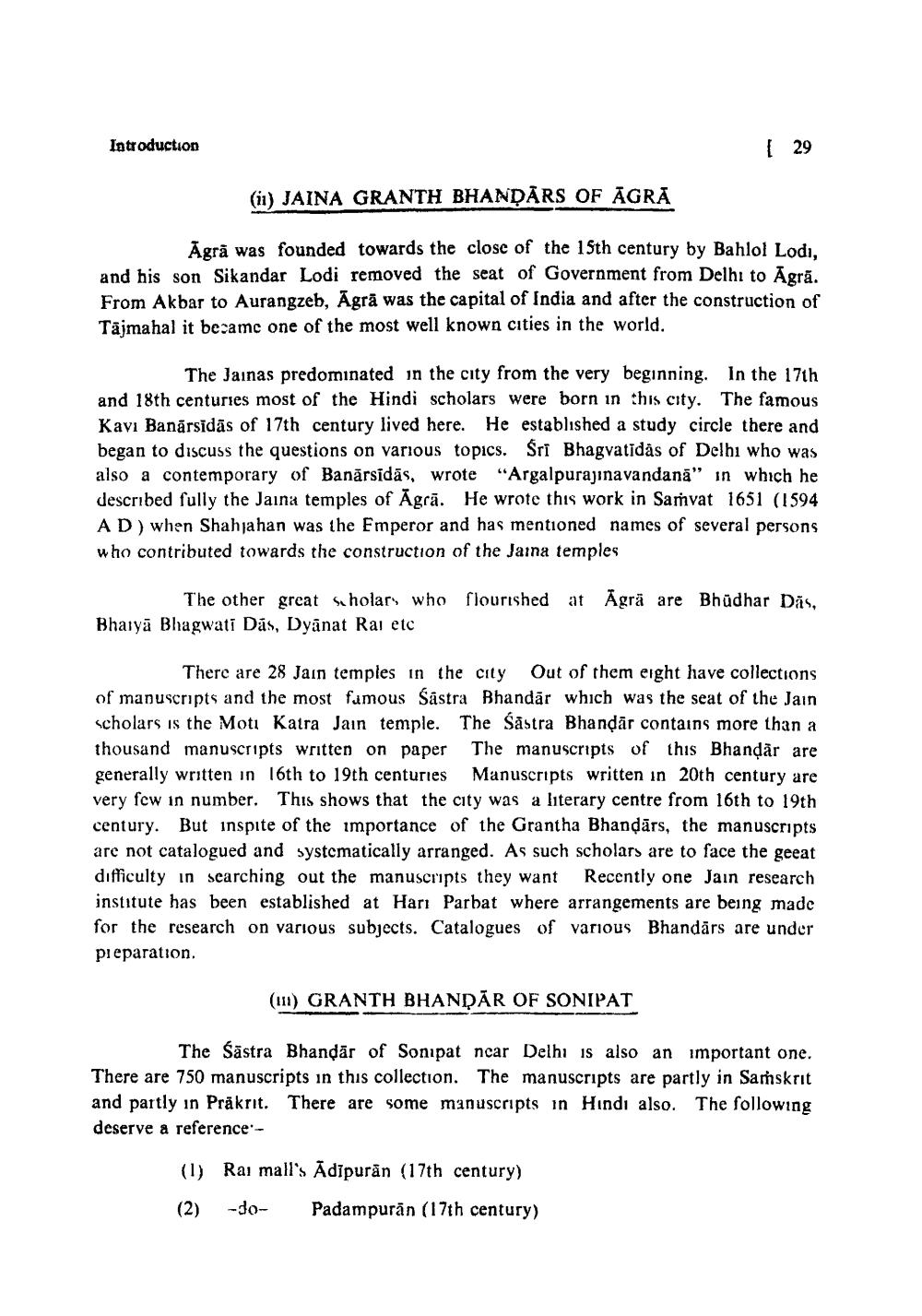________________
Introduction
| 29
(i) JAINA GRANTH BHANDĀRS OF AGRA
Agrå was founded towards the close of the 15th century by Bahlol Lodi, and his son Sikandar Lodi removed the seat of Government from Delhi to Agrā. From Akbar to Aurangzeb, Agrā was the capital of India and after the construction of Tajmahal it became one of the most well known cities in the world.
The Jainas predominated in the city from the very beginning. In the 17th and 18th centuries most of the Hindi scholars were born in this city. The famous Kavi Banarsidās of 17th century lived here. He established a study circle there and began to discuss the questions on various topics. Sri Bhagvatidās of Delhi who was also a contemporary of Banārsidās, wrote “Argalpurajinavandana" in which he described fully the Jaina temples of Āgrā. He wrote this work in Samvat 1651 (1594 AD) when Shahjahan was the Emperor and has mentioned names of several persons who contributed towards the construction of the Jaina temples
The other great Sholars who flourished at Agrä are Bhüdhar Dãs. Bhaiya Bhagwati Dás, Dyanat Rai etc
There are 28 Jain temples in the city Out of them eight have collections of manuscripts and the most famous Sastra Bhandār which was the seat of the Jain scholars is the Moti Kaira Jain temple. The Sastra Bhandār contains more than a thousand manuscripts written on paper The manuscripts of this Bhandar are generally written in 16th to 19th centuries Manuscripts written in 20th century are very few in number. This shows that the city was a literary centre from 16th to 19th century. But inspite of the importance of the Grantha Bhandārs, the manuscripts are not catalogued and systematically arranged. As such scholars are to face the geeat difficulty in searching out the manuscripts they want Recently one Jain research institute has been established at Hari Parbat where arrangements are being made for the research on various subjects. Catalogues of various Bhandārs are under pieparation.
(111) GRANTH BHANDĀR OF SONIPAT
The Šāstra Bhandar of Sonipat ncar Delhi is also an important one. There are 750 manuscripts in this collection. The manuscripts are partly in Sanskrit and partly in Präkrit. There are some manuscripts in Hindi also. The following deserve a reference -
(1) Rai mall's Adipurân (17th century) (2) -80- Padampurān (17th century)




